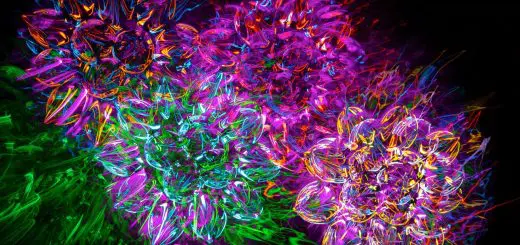Understanding Synchronicity

Looking for more amazing products? Check out our online store and explore our collection here! Happy shopping!
Before diving in, please note: This post is for informational purposes only. If you’d like to know more about how we approach topics, feel free to check out our friendly Disclaimer Page.
Hey there, amazing readers! 
We’re committed to delivering quality posts, and your support (even just sticking around despite the ads) means everything to us. So, bear with us, and thanks for helping us keep the good vibes rolling. Now, on to the fun stuff!
TRANSLATE BUTTON AT THE END OF THE ARTICLE
A Quick Overview
Synchronicity is a concept that refers to meaningful coincidences that occur without any apparent causal relationship.
It suggests that events are connected in a way that goes beyond conventional cause and effect.
This phenomenon has intrigued philosophers, psychologists, and scientists for centuries, prompting various interpretations and theories.
Understanding synchronicity involves delving into its origins, exploring its implications, and recognizing its presence in our daily lives.
What is Synchronicity?
Synchronicity can be best described as a meaningful coincidence that cannot be explained by conventional notions of causality.
It is characterized by the alignment of events that seem to be unrelated but share a common underlying theme or meaning.
This concept implies a deeper connection between the external world and an individual’s inner psychological state.
It suggests that there is a hidden order or intelligence at work in the universe that orchestrates these seemingly random occurrences.
Origins of the Concept
The concept of synchronicity was first introduced by the renowned Swiss psychiatrist Carl Jung in the early 20th century.
Jung developed this idea as a way to explain the occurrence of meaningful coincidences that seemed to defy rational explanation.
He believed that synchronicity represented a bridge between the conscious and unconscious aspects of the psyche, offering insights into the workings of the human mind and the universe at large.
Carl Jung’s Theory
Carl Jung’s theory of synchronicity posits that events are not connected through a direct cause-and-effect relationship but rather through a deeper, more meaningful connection.
According to Jung, synchronicity is a manifestation of the collective unconscious, a shared reservoir of archetypal symbols and experiences that shape human behavior and perceptions.
Jung believed that by recognizing and interpreting synchronistic events, individuals could gain a deeper understanding of themselves and their place in the world.
Meaning and Significance
The significance of synchronicity lies in its ability to provide individuals with a sense of meaning and purpose in their lives.
By recognizing the interconnectedness of events and the hidden patterns that govern the universe, individuals can derive a sense of guidance and direction.
Synchronicity can serve as a source of inspiration, validation, and reassurance, helping individuals navigate life’s uncertainties with a greater sense of clarity and insight.
Types of Synchronicity
There are various types of synchronicity that can manifest in different ways.
Some common types include:
Numerical synchronicities: Repeated sequences of numbers that hold special significance to the individual.
Symbolic synchronicities: Events or symbols that carry personal or cultural meanings.
Dream synchronicities: Events that mirror or relate to experiences in dreams.
Serendipitous synchronicities: Chance encounters or fortuitous events that lead to unexpected outcomes.
Examples in Daily Life
Synchronicity can be observed in everyday occurrences, such as:
Meeting someone who shares a significant connection with you shortly after you were thinking about them.
Receiving a message or sign that provides guidance or reassurance during a difficult time.
Coming across a book or article that addresses a question or concern you have been pondering.
Experiencing a series of events that seem to align perfectly to lead you towards a desired outcome.
How to Recognize it
Recognizing synchronicity requires a heightened sense of awareness and openness to the unexpected.
Explore the Path to Spirituality and Enlightenment – Start Here.
Some ways to recognize synchronicity include:
Paying attention to repeated patterns or symbols that appear in your life.
Trusting your intuition and following your instincts when making decisions.
Reflecting on the meaning and significance of seemingly random events.
Keeping a journal to track and analyze synchronistic occurrences.
Skepticism and Criticisms
Despite its appeal to many individuals, synchronicity has faced skepticism and criticism from skeptics and scientists who argue that it lacks empirical evidence and scientific validation.
Critics posit that synchronicity is merely a product of cognitive biases, random chance, or selective perception.
While some remain skeptical of the concept, others continue to explore its implications and potential significance.
Scientific Perspectives
From a scientific standpoint, synchronicity remains a controversial and debated topic.
While some researchers dismiss it as pseudoscience, others suggest that the phenomenon may be linked to quantum mechanics, chaos theory, or other unconventional scientific concepts.
The study of synchronicity continues to intrigue scientists and scholars who are interested in exploring the intersection of psychology, physics, and metaphysics.
Cultural Interpretations
Synchronicity holds different meanings and interpretations in various cultures and belief systems.
In Eastern philosophies, synchronicity is often associated with the concept of karma and the interconnectedness of all beings.
Indigenous cultures may view synchronistic events as messages from the spirit world or ancestors.
Each culture brings its unique perspective and understanding to the phenomenon of synchronicity, enriching its significance and implications.
Impact on Psychology
The concept of synchronicity has had a profound impact on the field of psychology, particularly in the realm of depth psychology and analytical psychology.
By integrating the idea of synchronicity into therapeutic practice, psychologists can help clients explore the deeper meaning behind seemingly random events in their lives.
Synchronicity can serve as a tool for self-discovery, personal growth, and healing, offering individuals a new lens through which to view their experiences and challenges.
Incorporating Synchronicity
Incorporating synchronicity into daily life involves cultivating a sense of mindfulness, openness, and curiosity.
Some ways to incorporate synchronicity include:
Setting intentions and being open to unexpected opportunities and experiences.
Engaging in practices such as meditation, journaling, or dream analysis to deepen your awareness of synchronistic events.
Seeking out meaningful connections and relationships that align with your values and aspirations.
Trusting in the wisdom of the universe and the guidance it provides through synchronistic occurrences.
Conclusion
In conclusion, synchronicity is a fascinating and enigmatic concept that offers a unique perspective on the interconnectedness of events and the underlying order of the universe.
While skeptics may question its validity, many individuals find value and meaning in recognizing and interpreting synchronistic occurrences in their lives.
By exploring the origins, implications, and types of synchronicity, we can gain a deeper understanding of this phenomenon and its potential impact on psychology, culture, and personal growth.
Embracing synchronicity can lead to a more profound sense of connection, purpose, and fulfillment in our lives.

The Enlightenment Journey is a remarkable collection of writings authored by a distinguished group of experts in the fields of spirituality, new age, and esoteric knowledge.
This anthology features a diverse assembly of well-experienced authors who bring their profound insights and credible perspectives to the forefront.
Each contributor possesses a wealth of knowledge and wisdom, making them authorities in their respective domains.
Together, they offer readers a transformative journey into the realms of spiritual growth, self-discovery, and esoteric enlightenment.
The Enlightenment Journey is a testament to the collective expertise of these luminaries, providing readers with a rich tapestry of ideas and information to illuminate their spiritual path.
Our Diverse Expertise
While our primary focus is on spirituality and esotericism, we are equally passionate about exploring a wide range of other topics and niches 

To ensure we provide the most accurate and valuable insights, we collaborate with trusted experts in their respective domains 
Our blog originally focused on spirituality and metaphysics, but we’ve since expanded to cover a wide range of niches. Don’t worry—we continue to publish a lot of articles on spirituality! Frequently visit our blog to explore our diverse content and stay tuned for more insightful reads.
Hey there, amazing reader! 
Check out our store here and take a peek at some of our featured products below! Thanks for being awesome!













